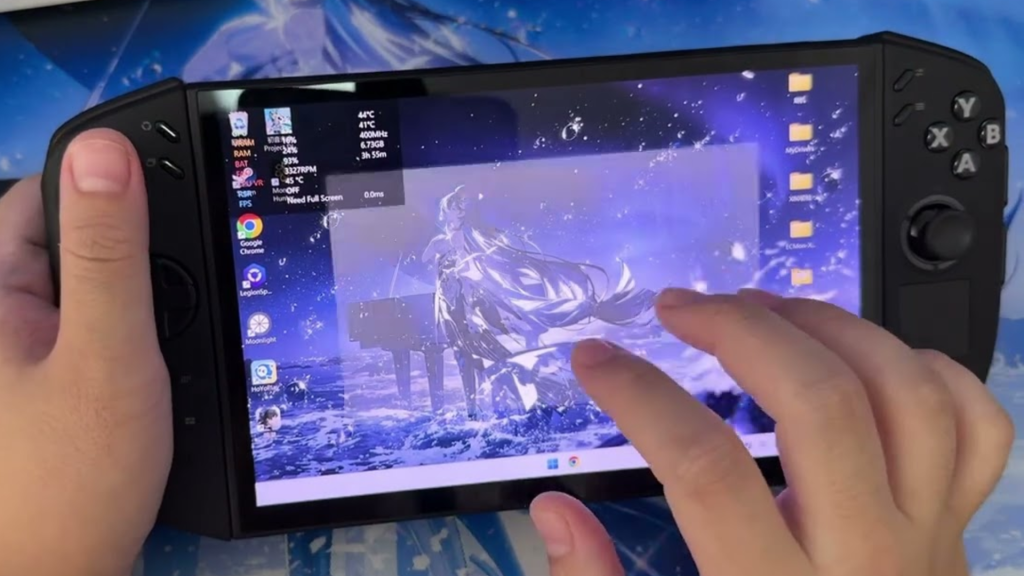As the handheld gaming market continues to grow, Lenovo is stepping up with the announcement of its next-generation Legion Go 2. Inspired by the Nintendo Switch, this device is designed for gamers seeking a portable, powerful PC gaming experience. Recently, a leaked 20-minute video surfaced on YouTube, unveiling many of the device’s features and hardware specifications, hinting at a promising future for Lenovo’s handheld lineup.
Initial Impressions and Features
The leaked video showcased an impressive array of specifications for the Lenovo Legion Go 2. One of the standout features is the 8.8-inch OLED display, boasting a resolution of 1920×1200 and a refresh rate of 144Hz. This places the device above many competitors in terms of screen quality and responsiveness, enhancing the gaming experience considerably. With a vibrant OLED panel, gamers can expect vivid colors and deeper contrasts, making the visuals more engaging, especially in high-paced action games.
The prototype in the video also revealed that it is powered by the new Ryzen Z2 Extreme processor, operating at a clock speed of 3.3GHz. Coupling this with up to 32GB of RAM — double the amount offered in the original model — the Legion Go 2 aims to provide a significant performance boost. Furthermore, it features a robust 74-watt-hour battery, a substantial improvement that promises longer gaming sessions on-the-go. Storage options for the device can reach up to 2TB, though the unit in the video was equipped with 1TB.
Another notable aspect highlighted in the video was the dual-chamber battery design and active cooling system, which is crucial for maintaining optimal performance during extended play. The user also performed a size comparison with the Nintendo Switch 2, revealing that the Legion Go 2 weighs approximately 938 grams, which is about 10% heavier than its predecessor — a trade-off for its enhanced features.
Operating System and User Interface
Operating on Windows 11, the Legion Go 2 showcases a user-friendly interface that appears to run smoothly, which is an essential factor as handheld devices often struggle with larger operating systems. Lenovo’s decision to stick with Windows might raise eyebrows, especially since competing products like the Steam Deck, which runs on SteamOS, have shown that specialized operating systems can yield better performance in gaming scenarios. A recent study by Tom’s Hardware indicated that handhelds running SteamOS often experience higher frame rates and better battery efficiency in gaming applications compared to their Windows counterparts.
Lenovo acknowledged the performance discrepancy as it recently launched the Legion Go S, a smaller and less expensive alternative that runs on SteamOS. Reports have shown that this version outperformed its Windows counterpart in several gaming scenarios, highlighting that the choice of operating system can significantly impact gaming performance.
Market Position and Future Expectations
While Lenovo has yet to concretely announce the release window for the Legion Go 2, it is expected to hit the market later in 2025. Pricing remains a critical question point; the original model started at $700, while pricing for the newer Legion Go S models falls between $600 and $730, depending on specifications. With the enhancements seen in the Legion Go 2, one might anticipate a price increase, which could affect its competitiveness in a crowded market.
The success of the Legion Go 2 will heavily rely on its ability to balance performance, price, and its operating system’s efficiency. Given that handheld gaming continues to evolve, with significant investment from companies like Valve and Asus, Lenovo’s approach could either position it as a leader in the space or risk being overshadowed by alternatives. Consumer feedback and expert reviews will be pivotal as the market reacts to these advancements and the eventual pricing strategy. With growing competition, Lenovo’s entry into the next phase of handheld gaming could potentially reshape the landscape.
Community Response and Anticipation
The leaked video has sparked considerable excitement among gaming enthusiasts and tech reviewers alike. Social media platforms and gaming forums are buzzing with discussions about the Legion Go 2’s specifications and what they mean for the future of portable gaming. Users have expressed optimism about the device’s performance and features, particularly the OLED screen and substantial RAM upgrade. However, there is also a sense of caution regarding the weight and potential battery life concerning the powerful hardware packed into the device.
Moreover, many users are curious to see how the Legion Go 2 will fare against other upcoming devices in the handheld market, especially as competitors enhance their offerings. As the gaming community eagerly awaits the official announcement and release details, Lenovo’s ability to meet or exceed expectations will play a crucial role in the device’s reception and overall success in the competitive gaming landscape.

